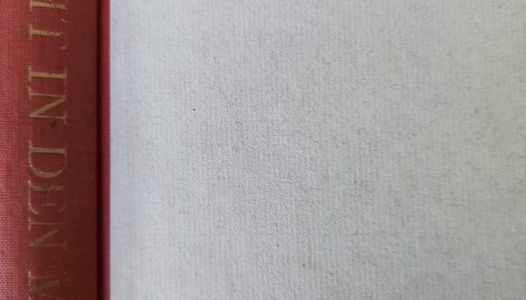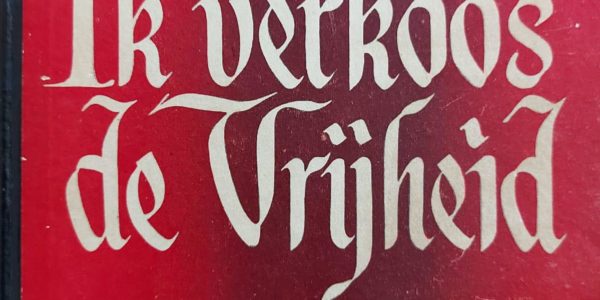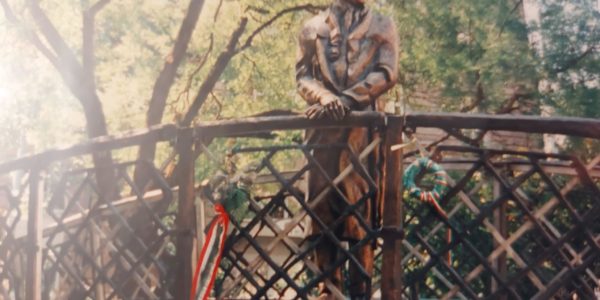Patrick van Schie
A century ago, on January 21, 1924, Vladimir Ilyich Ulyanov, better known as Lenin, died. His embalmed body still lies in the mausoleum on Red Square in Moscow. Communists still revere him; and not just the elderly. The British Marxist Student Federation (MSF), for example, states on its site: “Lenin was without doubt one of the greatest revolutionaries of our time.” Not a single critical comment is made, on the contrary: “It is a monstrous lie to suggest that Stalinism is the continuation of the democratic regime of Lenin, as the apologists of capitalism claim.” This touches on a more widely held view, namely that communism in itself and in the early days of the Soviet Union would have been good and that it would only have been perverted by and under Stalin. According to that idea, it is only unfortunate that Stalin managed to come to power in the Soviet Union after Lenin’s death; Lenin had wanted to prevent this by warning that Stalin was dangerous. The misconception about a ‘good’ Lenin is partly fueled by inaccurate or deliberately misleading history education. Lenin’s warning for Stalin is mentioned, but not always what the first years of communist rule over the Soviet Union meant. Perhaps it is indicative that books by a historian such as the British Eric Hobsbawm (died in 2012), a lifelong member of the communist party, were frequently prescribed as standard works for educational institutions in the West. Hobsbawm told himself: “Drawn yourself in Leninism. Let it become your second nature.” And after reading Lenin’s works again, he wrote: “Astonishingly how that cheers me up and clears my mind.
Dissenters silenced
Lenin’s books and pamphlets are riddled with abuse against anyone who dared to disagree with him. It is telling when someone experiences it as uplifting. As long as Lenin was the leader of an insignificant party, he had to limit himself to vulgar insults, but when Lenin and his Bolsheviks came to power in a coup in October 1917, freedom of the press was abolished within two days. Lenin declared: “Allowing bourgeois newspapers would mean ceasing to be a socialist. […] Anyone who now talks about freedom of the press chooses to go backwards and stops on the road to socialism.” In the first months, magazines from other socialist movements were tolerated, but after six months these were also banned. After that, only the communist party leadership determined what people could read and hear and what counted as ‘truth’ (Pravda).
Things were not going any better for opposing political parties. The pre-coup Russian government had organized national elections for a new Duma (parliament). These did take place, albeit in areas controlled by the Bolsheviks (communists) under severe intimidation. Nevertheless, the Bolsheviks obtained ‘only’ 24% of the votes. The first day the new parliament met, it was immediately dispersed by violence by the communists. Parties other than the communist were soon banned.
Democratic centralism was introduced within the communist party itself. This meant that debates were still allowed to take place at the party leadership, but that as soon as a decision was made, the minority had to obey. All lower echelons of the party were required to implement the decisions uncritically.
The Cheka and the ‘Red Terror’
One of the very first acts of the new communist regime after the coup in October 1917 was the establishment of its own secret police, the Cheka. This was a predecessor of the KGB (established in the 1950s). Opponents of communism were declared “enemies of the people,” and Lenin had never left any misunderstanding about what to do with them: “You have to hit them on the head, hit them mercilessly.” It certainly should not stop at hitting, as evidenced by Leni’s exhortation two months after the takeover: “As long as we do not use terror against speculators – a bullet through their heads on the spot – we will get nowhere.” In the summer of 1918, before an attempt to kill him was made that led to a sharp intensification of the Red Terror, he promoted “mass terror” to other leading communists. Lenin wrote: “We must certainly encourage the energy and mass character of terror.”
Unfortunately it didn’t stop just with words. Already in the first few months, 800 Socialist-Revolutionaries (followers of the largest party in the Duma elections) and 512 other political prisoners were executed in the capital Petrograd. Historian and Russia expert Sean McMeekin writes that in the first two months of communist rule, twice as many people were murdered by the Cheka than the Okhrana (the Tsars’ secret police) had victimized in an entire century.
Estimates of the total number of opponents deliberately murdered by the communist regime in the first years under Lenin, including workers who dared to strike against the new regime, vary considerably, which is partly due to the chaotic conditions in the years of civil war. The Cheka itself announced in 1922, the year in which Lenin suffered his first cerebral hemorrhage, that it had carried out 12,733 executions at that time. The actual number is considerably higher. The Tsar’s family was among the best-known victims, but murder took place on a much larger scale. Estimates by serious historians vary between over 50,000 and half a million deliberate executions; this does not include those killed in battle (the civil war) and as a result of famine due to the confiscation of grain crops by the Red Army.
Robert Conquest, one of the most renowned experts on terrorist acts in the Soviet Union (including the later periods), estimates that approximately 140,000 people were executed in the first five years of Bolshevik rule. If that estimate is correct, Lenin deliberately killed ten times as many people in 5 years in power than the Spanish dictator Franco would later do in a period of almost forty years.
Ukraine, signed execution orders and the Gulag
The Red terror was not limited to the republic of Russia. In the period of six months in 1919, thousands and thousands of opponents of communism were exterminated in Ukraine, in cities such as Kiev (at least 3,000), Kharkov (between 2,000 and 3,000) and Odessa (about 2,200). In addition, genocide was committed against the Cossacks who largely lived in Ukraine: in 1919 and 1920, between 300,000 and half a million Cossacks were murdered, out of a population of 3 million.
It is known that during a later period of terror in the Soviet Union, execution orders were personally signed by Stalin. This was not a novelty of his. Lenin also personally signed many execution orders. The execution was not limited to ‘simply’ shooting. The Cheka practiced the most gruesome methods of execution, from throwing people into blast furnaces to having them eaten by rats, and all kinds of other horrible ways to kill people in the most painful way.
The Gulag is also not an invention of Stalin. As early as September 1921, more than 60,000 people were held captive by the communist regime and tortured in concentration camps, mostly located in the icy north of Russia.
Conclusion
Lenin died, as mentioned, a century ago. He was then in power for 6¼ years. But, it is said that in May 1922 he suffered from a cerebral hemorrhage. He could not be held responsible for what happened next. Even if this was true, hundreds of thousands of people were deliberately murdered by the regime under his rule, not only with Lenin’s knowledge but also as a result of his incitement to more terror and sometimes after he had signed execution orders himself. In reality, Lenin only became paralyzed after his third cerebral hemorrhage, in March 1923. So he is at least responsible for what was done under the first 5½ years of the communist regime, apart from all the victims of the regime from that time on because of what Lenin founded and set in motion.
Stalin continued what Lenin started. It is only a difference in scale, we must remember that Lenin’s Red Terror was already on a large scale. Another difference is that Lenin left the communist party leadership undisturbed, while top communists under Stalin were also unsure of their lives. However, this can hardly be judged as a sign of mildness, let alone benevolence. Whether you were a ‘bourgeois’ or a non-communist socialist, it did not matter to Lenin. He showed no mercy to opponents. Lenin was violent and murderous, in words and deeds. With him passed away the first tyrannical communist ruler; Unfortunately, his bad example inspired many communist rulers after him.
Image: ©Beata Bruggeman-Sekowska Central and Eastern Europe Center
The photo was taken in Grutas Park in Lithuania.





Follow Us!